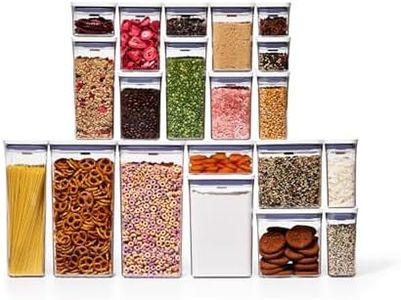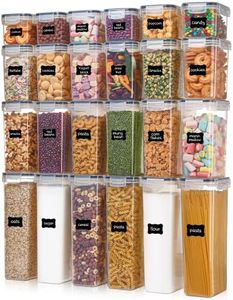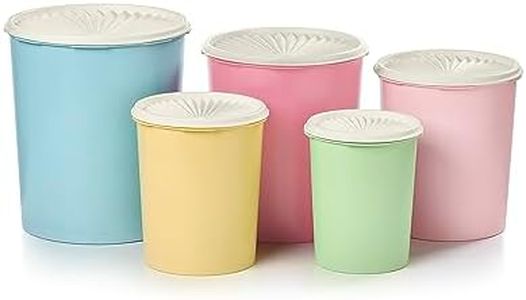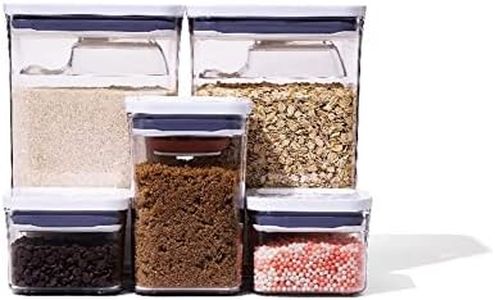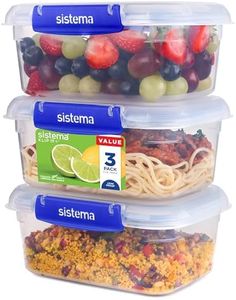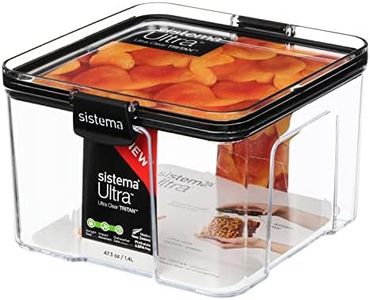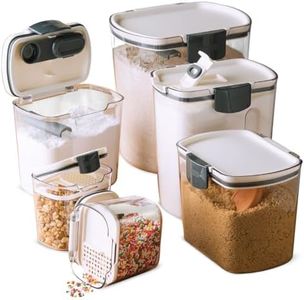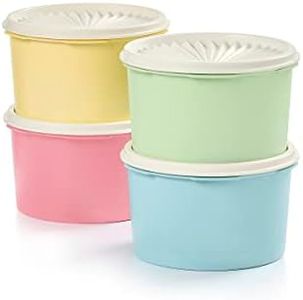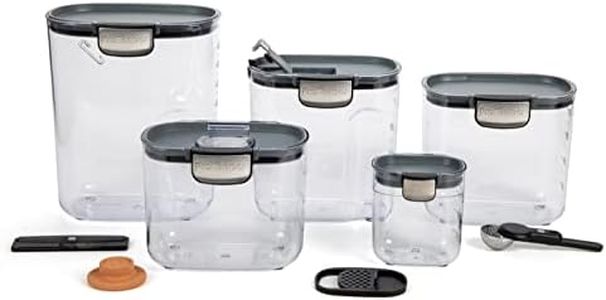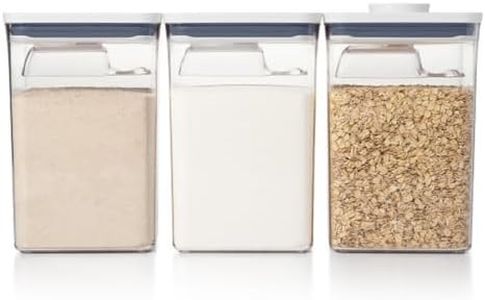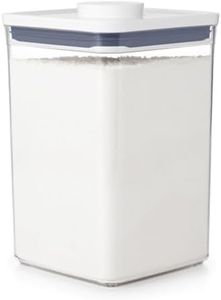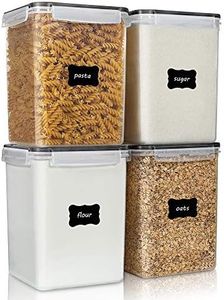We Use CookiesWe use cookies to enhance the security, performance,
functionality and for analytical and promotional activities. By continuing to browse this site you
are agreeing to our privacy policy
10 Best Flour Containers
From leading brands and best sellers available on the web.Buying Guide for the Best Flour Containers
Choosing the right flour containers can make a big difference in keeping your flour fresh, organized, and easy to use. With so many options available, it’s important to focus on the features that really matter for storage and everyday convenience. Understanding these key factors can help you select a container that fits your kitchen habits and keeps your flour in great condition.CapacityCapacity refers to how much flour the container can hold, and it’s important because it affects how often you’ll need to refill it and whether it will fit in your kitchen space. Flour containers usually range from about 1 liter (about 1 kilogram or 2 pounds of flour) to large tubs holding more than 5 liters. Smaller containers are good for people who bake occasionally or have limited storage, while larger ones suit frequent bakers who buy flour in bulk. Choose a size that matches the amount of flour you usually keep on hand without taking up unnecessary space.
MaterialFlour containers come in materials like plastic, glass, and stainless steel, each with unique benefits. Plastic is lightweight and less likely to break but can absorb odors or stain over time if not high quality. Glass is non-porous and doesn’t retain odors or stains but can be heavy and fragile. Stainless steel is sturdy and modern-looking but may not let you see the contents easily. Select a material that fits your preference for durability, visual appeal, and maintenance.
Airtight SealAn airtight seal keeps your flour fresh by preventing moisture, air, and pests from getting in. The quality and style of the seal varies: some containers use locking lids, silicone gaskets, or twist mechanisms. Basic lids may block dust but aren’t airtight, while premium options keep flour fresher for longer periods. If you live in a humid area or plan to store flour for weeks, pick a container with a secure, airtight seal.
Ease of UseEase of use includes factors like how simple it is to open the lid, pour or scoop flour, and clean the container. Wide openings make measuring easier and reduce mess. Some containers have handles or spouts for more control. If you use flour often, look for a container with a wide mouth and easy-to-remove lid. If cleaning is important, consider smooth, dishwasher-safe materials to save time and effort.
Stackability and ShapeStackability and shape can affect how efficiently your containers fit in your pantry. Stackable shapes help save space, and square or rectangular designs often fit shelves better than round ones. If you have limited shelf space or like an organized pantry, choose containers that can stack securely and maximize your storage area.
TransparencyTransparency refers to how easily you can see the contents and the amount left inside. Clear containers make it simple to check your flour supply without opening the lid, while opaque containers may look tidier but require you to open them to check levels. If you prefer quick visual checks or have multiple pantry staples, clear or windowed options can help avoid running out unexpectedly.
